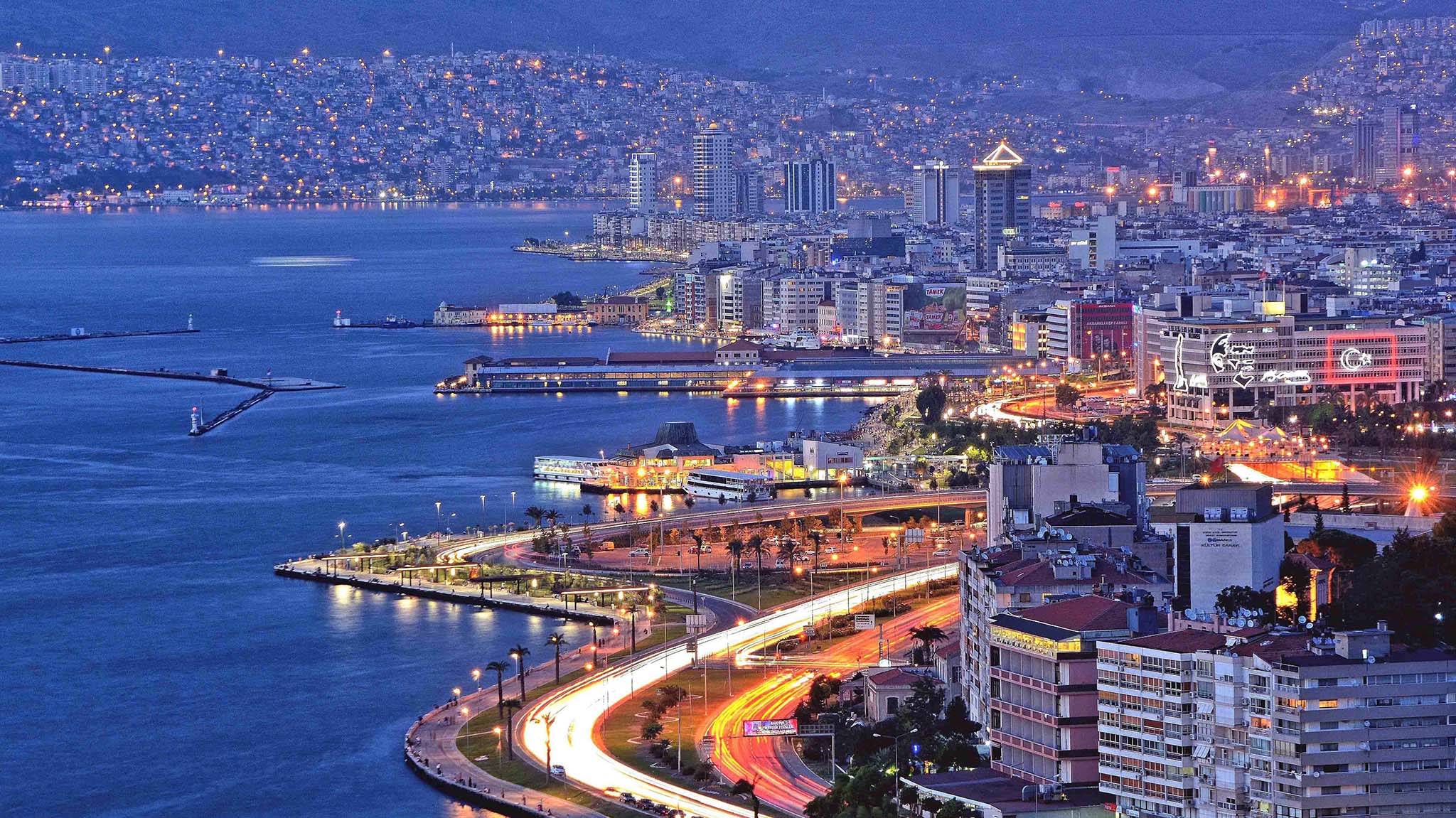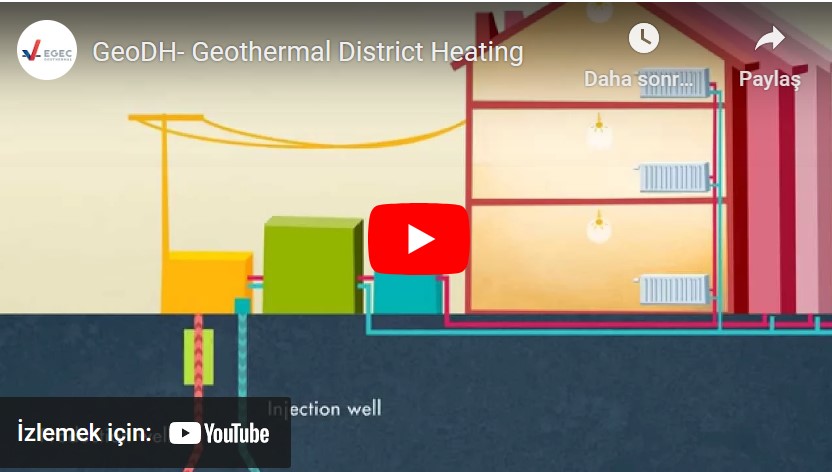
How it works?
Geothermal District Heating is the use of geothermal energy (i.e. the energy stored in form of heat below the earth’s surface) to heat individual and commercial buildings, as well as for industry, through a distribution network.

For original of this video and more from its contect creator please visit : GeoDH Website
In this system, a geothermal power plant is built to extract heat from the ground, using wells to access the geothermal energy. The heat is then transferred to a fluid, such as water, which is circulated through a heat exchanger and used to heat the water that is distributed throughout the district heating system. The hot water is circulated through the pipes to the various buildings, where it is used to provide heating and hot water to residents and businesses.
Geothermal district heating systems can be highly efficient, with very low greenhouse gas emissions and reduced reliance on fossil fuels. They can also be more cost-effective than individual heating systems in each building, especially in areas where natural gas or other heating fuels are expensive. However, the upfront cost of building the geothermal power plant and the district heating system can be substantial, making it challenging for some communities to adopt this technology.
Geothermal district heating is the use of the Earth’s natural thermal energy in order to provide heat to a group of buildings. There are locations on Earth that may make better use of this, due to being situated on “geothermal hot spots” (shown in Figure 2) where they have access to higher underground temperatures. The first use of district heating occurred in the 14th century in France.
Temperatures above 40°C and less than 150°C are ideal for these applications, since geothermal temperatures above 150°C are better used for geothermal electricity generation. Between 90°C and 150°C is considered a “moderate” temperature range, and can be used in certain low-temperature power plants, or in more energy-intensive industrial heating applications.
Carbon footprint is a main part of the ecological footprint.
The carbon footprint has its importance in the environment only when it is not accumulating in an amount greater than its sequestration. Carbon is an essential component of elements, molecules, building structures, etc. Forests and oceans are carbon sinks.
Plants need carbon for energy and growth. Since industrialization, the carbon release in the air is increasing leading to increasing global carbon emissions and carbon footprint.
Deforestation is releasing stored carbon back to the environment. Ocean acidification is not letting the ocean store more carbon.
Industries are kept releasing carbon into the air.
The total installed geothermal power generation capacity at year-end 2022 stood at 16,127 MW, an increase of 286 MW over 2021.
Here the Top 10 geothermal countries year-end 2021:
- United States* – 3,794 MW (updated our numbers as per the notes below)
- Indonesia – 2,356 MW – additions at Sorik Marapi, Sokoria and a small binary plant at Lahendong
- Philippines – 1,935 MW – a small binary plant was added
- Turkiye – 1,682 MW – we adapted/ corrected our numbers, there were no additions in 2022
- New Zealand – 1,037 MW – no changes
- Mexico – 962.7 MW – no change
- Kenya – 944 MW – addition of the 83.3 MW Olkaria I Unit 6 (with new additions in construction, the country should soon join the Geothermal GW Country Club)
- Italy – 944 MW – no change
- Iceland – 754 MW
- Japan – 621 MW – smaller scale additions and corrections of numbers (of previously unrecorded numbers)
Helps Climate Change
Geothermal energy has the sixth-lowest carbon footprint of all energy types. Per kWh produced, geothermal energy emits 38 grams of CO2 on a life-cycle basis. It combats climate change, comes with various environmental benefits, and has only minute amounts of greenhouse gas emissions.
Lowest levels of CO2
Geothermal energy is a sustainable energy source that uses heat from the earth’s core and produces little to no waste products while promising one of the lowest levels of carbon dioxide (CO2) emissions. So we had to ask: What is the carbon footprint of geothermal energy?
Some Facts
Eighty-five percent of all human-produced carbon dioxide emissions come from the burning of fossil fuels like coal, natural gas and oil, including gasoline as well as some industrial processes such as cement manufacturing. All the Termites on Earth produce more CO2 than humans do!
Geothermal Sources
are a one of the kind renewable energy types and will never deplete. Abundant geothermal energy will be available for as long as the Earth exists. It is a renewable energy source from the heat generated by the earth's internal core and is available 7/24/365 as long as we care about it.

